Luis Sanchez
CMAViT: Integrating Climate, Managment, and Remote Sensing Data for Crop Yield Estimation with Multimodel Vision Transformers
Nov 25, 2024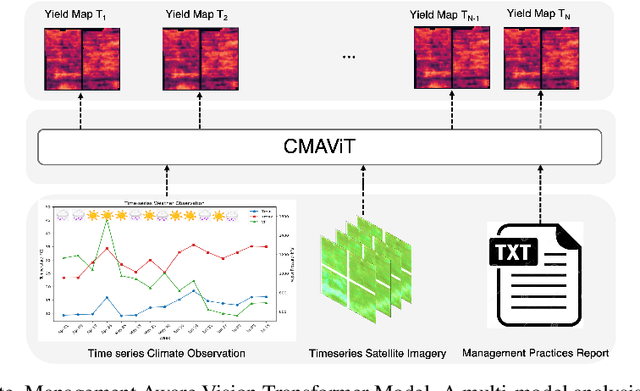

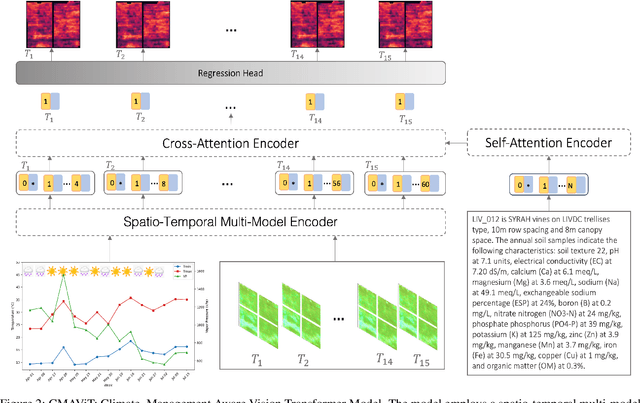

Abstract:Crop yield prediction is essential for agricultural planning but remains challenging due to the complex interactions between weather, climate, and management practices. To address these challenges, we introduce a deep learning-based multi-model called Climate-Management Aware Vision Transformer (CMAViT), designed for pixel-level vineyard yield predictions. CMAViT integrates both spatial and temporal data by leveraging remote sensing imagery and short-term meteorological data, capturing the effects of growing season variations. Additionally, it incorporates management practices, which are represented in text form, using a cross-attention encoder to model their interaction with time-series data. This innovative multi-modal transformer tested on a large dataset from 2016-2019 covering 2,200 hectares and eight grape cultivars including more than 5 million vines, outperforms traditional models like UNet-ConvLSTM, excelling in spatial variability capture and yield prediction, particularly for extreme values in vineyards. CMAViT achieved an R2 of 0.84 and a MAPE of 8.22% on an unseen test dataset. Masking specific modalities lowered performance: excluding management practices, climate data, and both reduced R2 to 0.73, 0.70, and 0.72, respectively, and raised MAPE to 11.92%, 12.66%, and 12.39%, highlighting each modality's importance for accurate yield prediction. Code is available at https://github.com/plant-ai-biophysics-lab/CMAViT.
Treatment of Epistemic Uncertainty in Conjunction Analysis with Dempster-Shafer Theory
Jan 28, 2024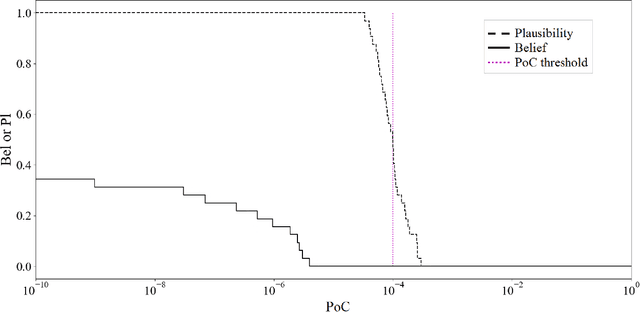
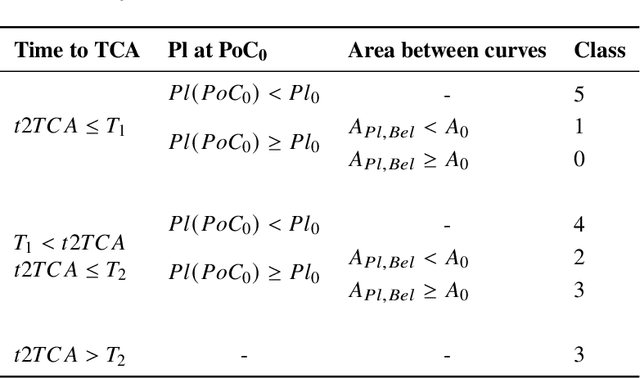
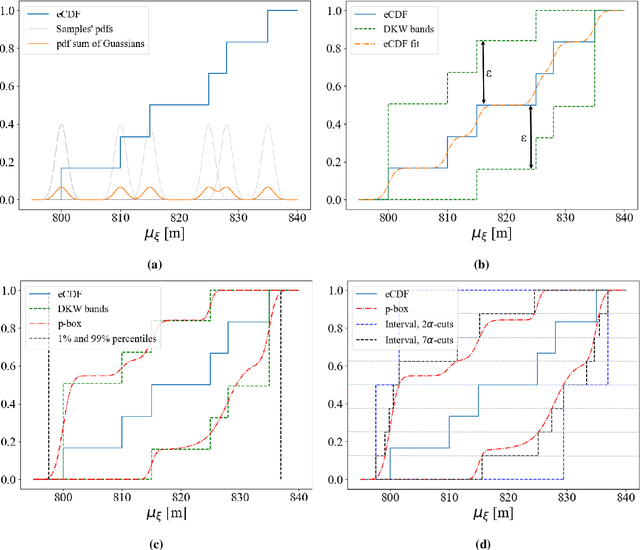
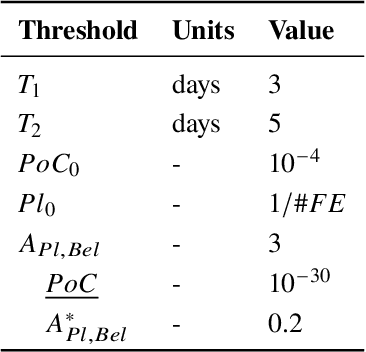
Abstract:The paper presents an approach to the modelling of epistemic uncertainty in Conjunction Data Messages (CDM) and the classification of conjunction events according to the confidence in the probability of collision. The approach proposed in this paper is based on the Dempster-Shafer Theory (DSt) of evidence and starts from the assumption that the observed CDMs are drawn from a family of unknown distributions. The Dvoretzky-Kiefer-Wolfowitz (DKW) inequality is used to construct robust bounds on such a family of unknown distributions starting from a time series of CDMs. A DSt structure is then derived from the probability boxes constructed with DKW inequality. The DSt structure encapsulates the uncertainty in the CDMs at every point along the time series and allows the computation of the belief and plausibility in the realisation of a given probability of collision. The methodology proposed in this paper is tested on a number of real events and compared against existing practices in the European and French Space Agencies.
 Add to Chrome
Add to Chrome Add to Firefox
Add to Firefox Add to Edge
Add to Edge